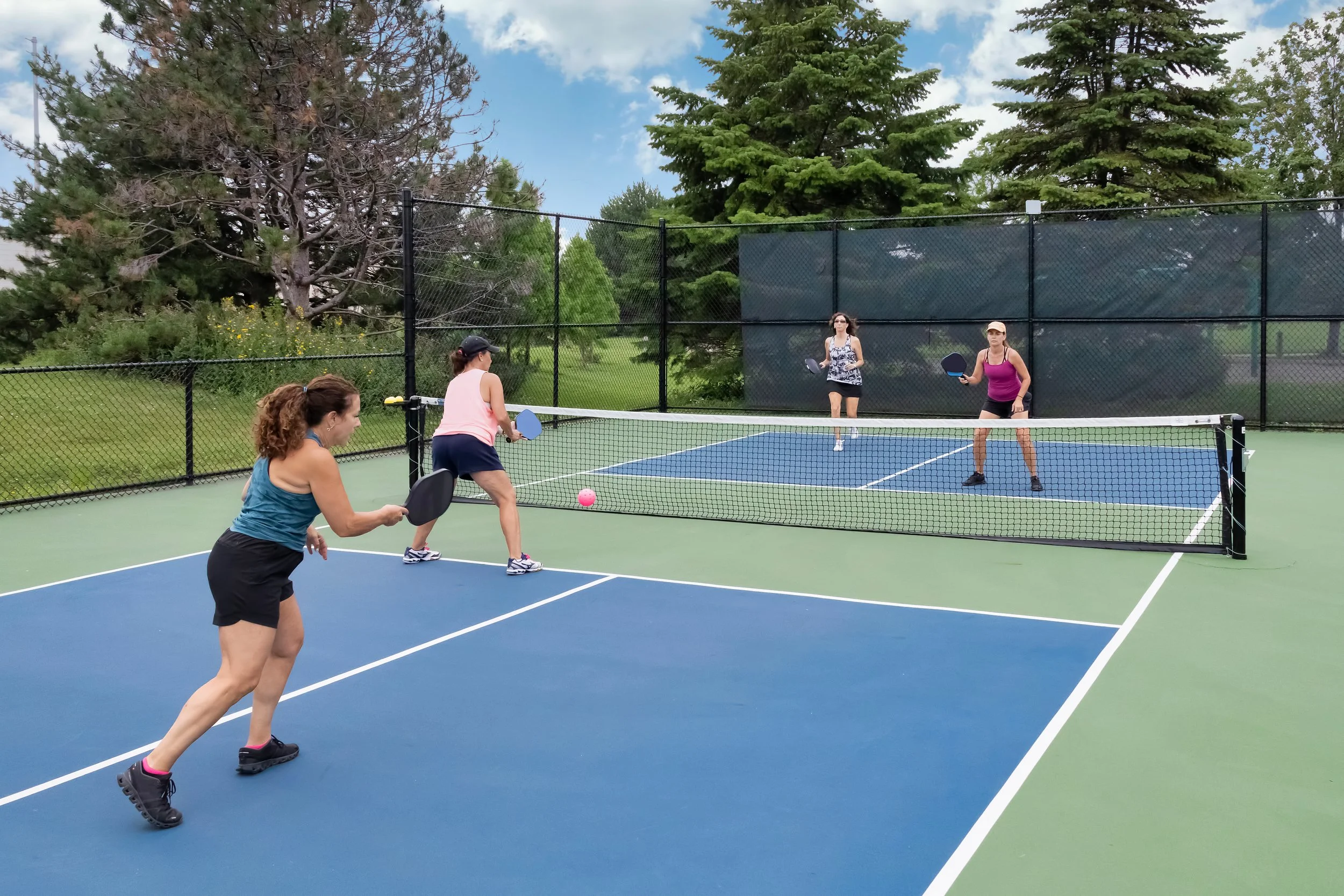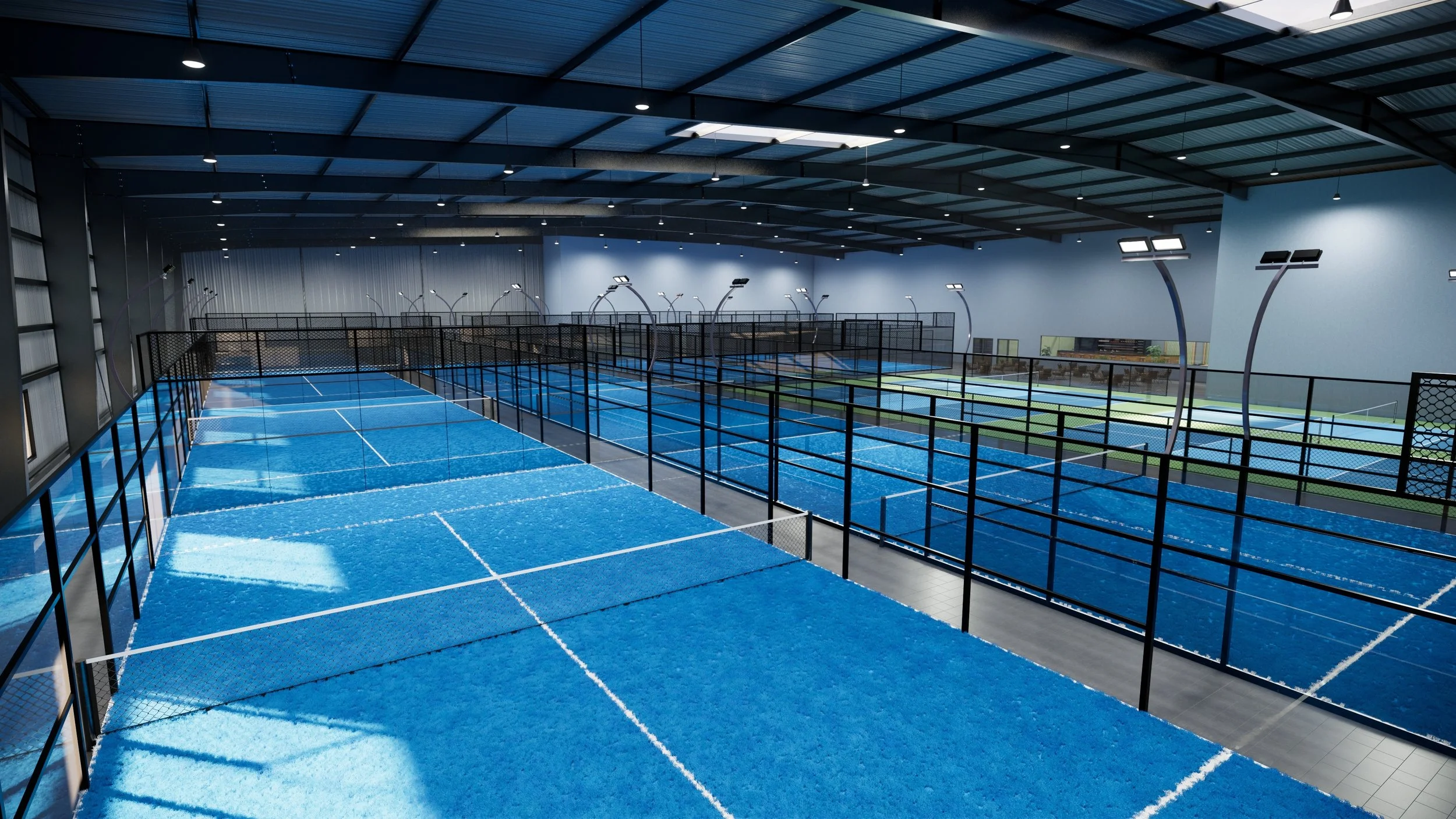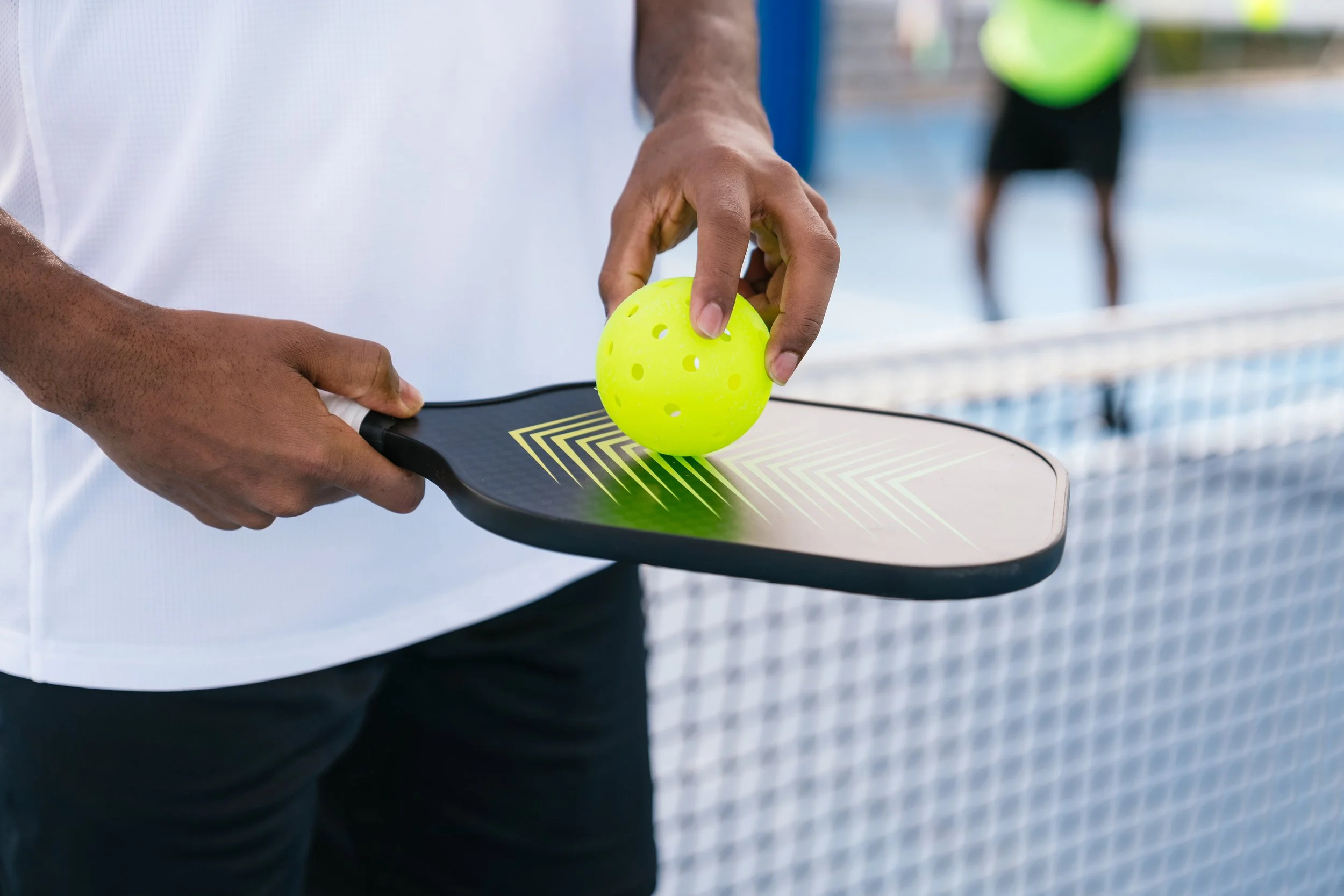Pickleball Court Dimensions
According to USA Pickleball, a pickleball court measures 20 feet wide by 44 feet long, the same for both singles and doubles play. The court is divided evenly by a net and includes several key zones that define gameplay:
Total playing area: 20’ x 44’ (880 square feet)
Non-volley zone (“The Kitchen”): 7 feet from the net on each side
Service areas: Two 10’ x 15’ rectangles on each half of the court
Recommended total space: 30’ x 60’ to allow room for players to move safely beyond the boundary lines
This size is about one-third the area of a tennis court, which is why many facilities repurpose or stripe tennis courts to accommodate pickleball.
If you’re visualizing the setup, a pickleball court diagram shows two equal sides with the net in the center, each half containing a kitchen near the net and two service boxes behind it. The simplicity of the design is part of what makes pickleball so adaptable for indoor and outdoor spaces.
How Big Is a Pickleball Court Compared to Other Courts?
Pickleball sits between badminton and tennis in both size and intensity. Here’s how it compares:
| Court Type | Width | Length | Total Area |
|---|---|---|---|
| Pickleball | 20 ft | 44 ft | 880 sq ft |
| Badminton (Doubles) | 20 ft | 44 ft | 880 sq ft |
| Tennis (Singles) | 27 ft | 78 ft | 2,106 sq ft |
| Tennis (Doubles) | 36 ft | 78 ft | 2,808 sq ft |
Because of its smaller footprint, pickleball courts are ideal for multi-use recreation spaces. Many facilities fit up to four pickleball courts on a single tennis court, depending on available clearance.
Pickleball Net Height and Setup
The pickleball net height is slightly lower than a standard tennis net, helping maintain the game’s fast, strategic pace.
Regulation net measurements are:
34 inches high at the center
36 inches high at the sidelines
Net length: 21 feet 9 inches from post to post
The top of the net should have a 2-inch white tape binding, and posts should be placed just outside the court lines for proper tension. Whether your courts are temporary or permanent, maintaining this exact height ensures consistent play and compliance with official rules.
Space and Surface Requirements
To ensure safety and comfort, it’s best to have at least 10 feet of clearance behind each baseline and 5 feet along each sideline, for a total area of roughly 30 feet by 64 feet per court.
Recommended surfaces include:
Concrete or asphalt: Most common for outdoor courts due to durability and consistent bounce.
Indoor sport surfaces: Polyurethane or cushioned rubber flooring helps reduce joint impact.
Acrylic coatings: Improve traction and extend surface life, especially in outdoor conditions.
If you’re building from scratch or resurfacing old tennis courts, choosing the right base and coating helps maintain play quality and reduces maintenance long term.
Fencing, Lighting, and Player Comfort
Designing courts for public or community use means thinking beyond dimensions. Proper fencing, lighting, and amenities make a big difference in how much your community enjoys and uses the space.
Fencing: Chain link fences 10 feet high with openings under 2 inches help keep balls contained.
Lighting: A minimum of 30 foot-candles for recreational play and 50 for competition is recommended.
Noise control: Windbreaks or acoustic panels can reduce paddle noise in residential areas.
Amenities: Benches, shade shelters, and nearby water access encourage longer, more enjoyable play sessions.
These upgrades not only improve usability but also extend court lifespan and help justify recreation funding or grants.
Converting a Tennis Court into a Pickleball Court
If you already have tennis courts, conversion is a cost-effective way to meet the growing demand for pickleball.
A single tennis court can fit one to four pickleball courts, depending on spacing. Many park departments add temporary nets and removable tape lines to test demand before fully resurfacing.
Before conversion, assess:
Surface condition and drainage
Lighting and fencing alignment
Community usage patterns (shared use vs. dedicated courts)
Integrating pickleball into existing facilities keeps your programming flexible while maximizing your available space.
Bring Pickleball to Your Community
Adding pickleball is an excellent opportunity to engage new community members and encourage lifelong activity. And with the right setup, your courts can serve players safely and efficiently for years.
But once you’ve gotten past the building phase, you’ll want to look into safe and efficient ways to make sure your community can enjoy its new pickleball court.
If you’re ready to start planning or managing court reservations, explore our court booking software, built to simplify scheduling, member access, and facility management for parks and recreation departments!





